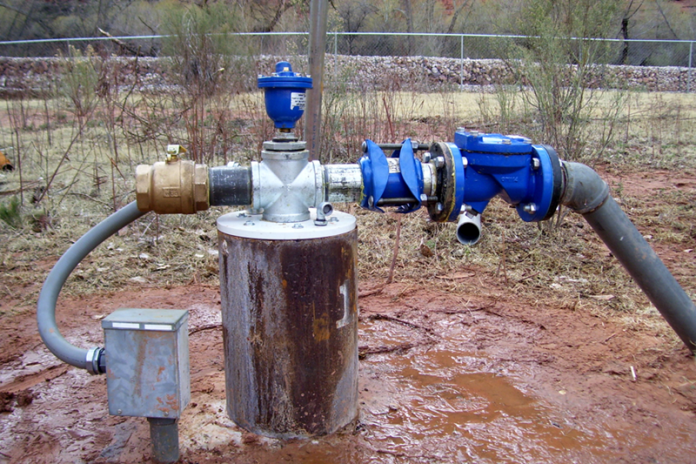Water is the backbone of our existence, providing us everything from lush gardens and thriving farms to bustling industries and serene households. But what happens when surface water sources run dry or fall short of demand? Enter the world of water bore pumps—a marvel of engineering that unlocks the treasures hidden beneath the earth’s surface. These pumps don’t just extract water; they provide independence, sustainability, and peace of mind, ensuring that no matter the circumstances, life keeps flowing. Whether you’re nurturing crops, watering livestock, or sustaining a household, water bore pumps are your gateway to an abundant and reliable water supply.
What Are Water Bore Pumps?
Water bore pumps are devices used to extract water from underground aquifers via boreholes or wells. These pumps play a significant role in irrigation, livestock watering, industrial processes, and even providing domestic water for households in remote areas. By accessing groundwater, water bore pumps ensure a reliable supply even during the time of drought or water restrictions.
The Importance of Choosing the Right Pump
Selecting the right water bore pump is critical for maximising efficiency and ensuring long-term performance. The choice depends on several factors, including:
Well Depth: The depth of your borehole determines the type of pump you’ll need. Submersible pumps are ideal for deep wells, while centrifugal pumps are more suited for shallow boreholes.
Water Quality: Different pumps handle varying levels of water quality. For instance, some pumps are designed to manage impurities and sediments better than others.
Flow Rate Requirements: The volume of water you need for irrigation, livestock, or household use will influence your choice. Ensure the pump can meet peak demand.
Energy Efficiency: Modern pumps come with energy-efficient designs, reducing long-term operational costs.
Types of Water Bore Pumps
Understanding the different types of water bore pumps will help you make an informed decision:
- Submersible Pumps
These pumps are submerged directly in the water source. They work by pushing water to the surface, making them highly efficient for deep boreholes. Submersible pumps are quiet, durable, and ideal for extracting water from aquifers located at significant depths.
- Centrifugal Pumps
Centrifugal pumps operate above ground and use suction to draw water up. They are typically used for shallow wells and are relatively easy to maintain. However, they may struggle with high water tables or deeper boreholes.
- Solar-Powered Bore Pumps
A sustainable alternative, solar-powered pumps use energy from the sun to extract water. These are particularly advantageous in off-grid areas, offering eco-friendly and cost-effective operation over time.
- Jet Pumps
Jet pumps are designed for shallow or deep wells and use a combination of suction and pressure to lift water. They are versatile but may require more energy compared to other types.
The Installation Process
Proper installation of a water bore pump is crucial for its functionality and longevity. The process involves:
Professional Drilling: Incorporate experienced professionals to drill the borehole. They will assess soil and groundwater conditions to determine the optimal drilling method and depth.
Pump Selection and Placement: Choose a pump suitable for the borehole depth and water usage. Submersible pumps are placed within the well casing, while centrifugal pumps are installed above ground.
Protective Measures: Install a bore cap or protective cover to prevent debris and contaminants from entering the borehole.
Maintenance Tips for Longevity
Regular maintenance ensures that your water bore pump operates efficiently and lasts for years. Here’s what you should do:
- Conduct Regular Checks
Check the pump, pipes, and electrical components for wear and tear. Look for signs of corrosion, scaling, or leaks.
- Monitor Water Quality
Test the water regularly for salinity, pH levels, and contaminants. Poor water quality can damage the pump over time.
- Clean the Pump and Borehole
Accumulation of sediments or algae can reduce efficiency. Schedule professional cleaning at least once a year.
- Check the Electrical System
Ensure that wiring, switches, and connections are in good condition to avoid power supply issues.
- Schedule Professional Servicing
Hire a qualified technician to perform a comprehensive check-up and address any issues before they escalate.
Challenges and How to Overcome Them
Despite their benefits, water bore pumps come with a few challenges:
- High Initial Costs
The cost of drilling, installation, and purchasing a pump can be substantial. However, the long-term savings on water bills often outweigh these expenses.
- Maintenance Demands
Regular maintenance is necessary to prevent issues such as pump failure or water contamination. Schedule a maintenance check annually.
- Regulatory Compliance
Groundwater extraction is regulated in many regions. Always ensure compliance with local laws and obtain the necessary permits before drilling.
Conclusion
Water bore pumps are an invaluable investment for individuals and businesses seeking a reliable and sustainable water source. By understanding the different types of pumps, their installation, and maintenance requirements, you can make the most of this essential technology.
For professional guidance, trusted equipment, and expert servicing, explore a local supplier in your area to ensure optimal performance. A well-maintained water bore pump not only secures your water supply but also contributes to responsible water management practices.

